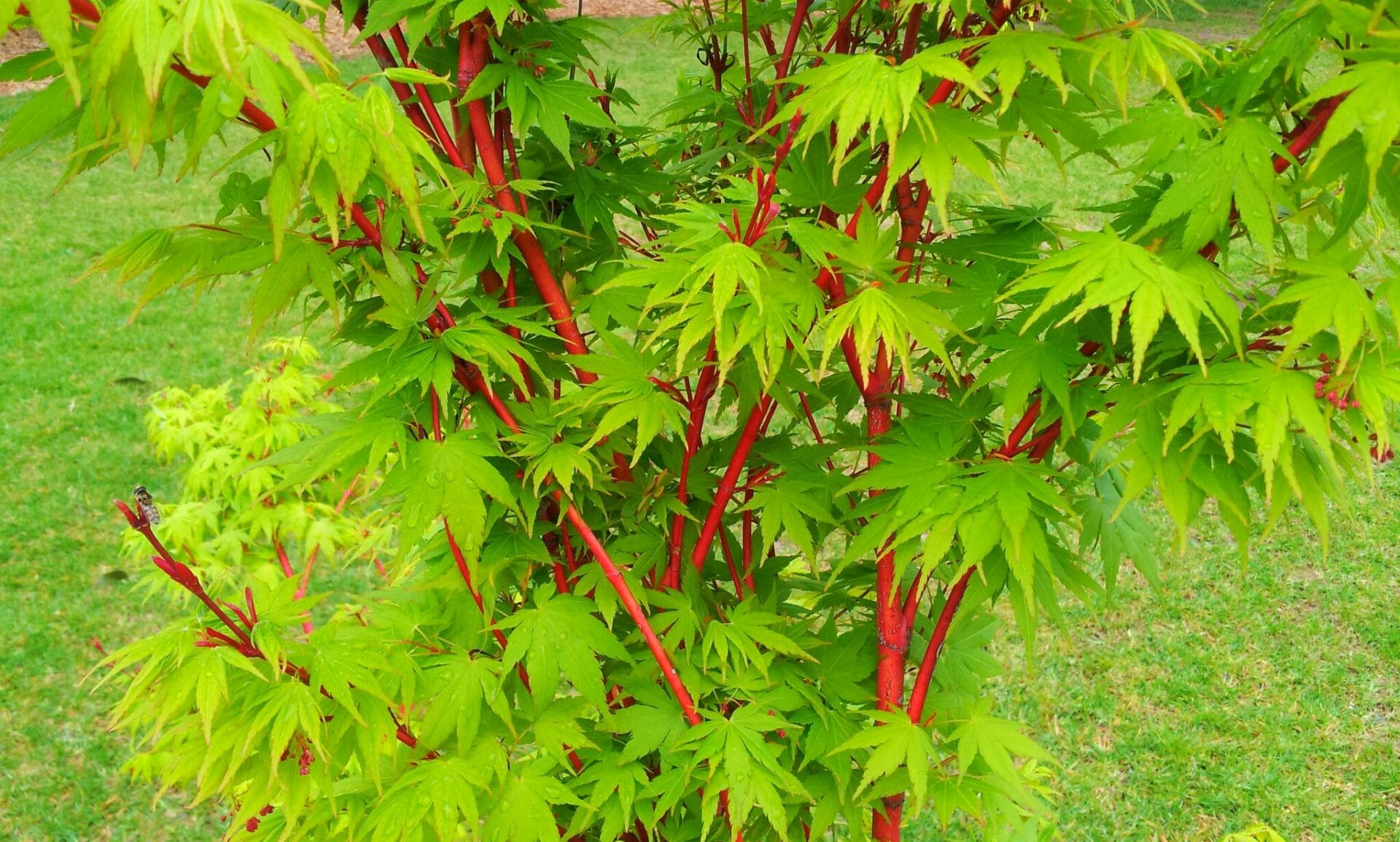
To plant a Japanese maple, dig a hole no deeper than the root ball and two to three times the width of the root ball and fill it with water. For the coral color bark to stand out best, plant Sango Kaku in front of dark green shrubs or a dark or very light color wall or other background. Underplant them with low growing shrubs or groundcovers. Don't plant them too close to other trees or large shrubs that might overcrowd them in the future. Use them to accentuate an entryway or as a focal point to draw attention to a certain area of the landscape or home. Japanese maples stand out best when they are planted as a single specimen. In the deep South, where the sun is stronger during summer, they benefit from some afternoon shade. Bright sunlight and hot summers do not kill trees, but in hot summer areas, the newest leaves may burn and scald when exposed to full, all-day sun. Ideally they prefer to be grown in similar conditions. In their natural habitat, Japanese maples are understory trees, growing in dappled forest sunlight and at the edges of woodlands. Japanese maples will grow in sun or shade but, in the deep South, they benefit from some afternoon shade. Sango Kaku can grow in a wide range of soil pH preferring a slightly acidic soil. Wet soggy soil around the roots is a killer.

Plant the the Coral Bark Japanese maple 'Sango Kaku' in sites that provide most any type of well-drained soil. Theme Gardens: Japanese, Rock, Woodland/Shade Growth Habits: Arching, Broad, Pendulous Branchlets, Upright, Vase-shape Landscape Uses: Containers / Planters, Entryway, Focal Point Specimen, Foundation, Frame Structure, Garden Pond, Landscape Beds, Median Strips, Outdoor Living Areas, Property Value, Small Groups Resistant To: Deer Resistant, Disease, Drought, Heat, Insect Season of Color: Fall Foliage, Spring Foliage
#Sango kaku japanese maple full#
New growth in the spring is more of a mild Kelly green, with an overall Palmatum-style leaf.Īdditional tags: Japanese Maples, Acer Palmatum 'Sango Kaku', Buy Japanese Maples at, MrMaple.Sun Exposure: Full / Mostly Sun, Morning Sun / Evening Shade, Morning Shade / Evening Sun, Dappled Light / Filtered Sun You will get a bright red from Fireglow, along with Sango Kaku's exuberant yellow. A great pair with Sango Kaku is Fireglow.

Tim says that he enjoys planting Sango Kaku near other Japanese Maples due to its yellow fall color that goes with many of the other oranges and reds that many of the other Japanese maples provide in the fall. Darker colored homes make great backdrops for this tree because it really stands out, as well as planting Sango Kaku in a conifer garden for a spark of color. Plant this tree in a location where you can enjoy it during the winter. This upright tree typically grows up to 15-20 feet tall in as many years, with about a foot of growth per year. Sango Kaku is a tree that you will want to give sunlight and leave outside. The bark gets even more exuberant in the winter you will see bright red stems that really show that spark of color in the winter. Sango Kaku leaves out in the spring with a lush chartreuse green, and the fall colors are going to be really brilliant yellows with accents of red and orange. Sango Kaku is a classic Japanese Maple meaning 'coral towers.' This tree gets its name more for the bark interest than the foliage. To purchase Sango Kaku straight from our website, click here. In this Episode of the MrMaple Show, Tim and Matt talk about Acer Palmatum 'Sango Kaku' Coral Bark Japanese Maple. Acer Palmatum 'Sango Kaku' Coral Bark Japanese Maple


 0 kommentar(er)
0 kommentar(er)
